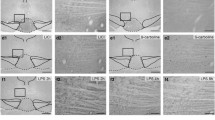Abstract
Rationale. The dorsal periaqueductal gray matter (dPAG) has been implicated in the modulation of defensive behavior. Electrical stimulation of this structure can be used as an unconditioned stimulus to produce a conditioned fear reaction expressed by freezing, antinociception, and autonomic responses.
Objectives. This study investigated the influence of benzodiazepine, serotonergic, and opioid mechanisms on these conditioned responses.
Methods. Animals implanted with an electrode and a guide cannula into the dPAG were submitted to two conditioning sessions. Each session consisted of ten pairings of the light in a distinctive chamber (CS) with the electrical stimulation of this structure at the escape threshold. On the next day, each animal was exposed only to the CS (testing) and the duration of freezing, number of rearing and grooming episodes were recorded for 5 min. Before and after the testing session, animals were submitted to the tail-flick test. Fifteen minutes before the exposure to the CS, animals received injections into the dPAG of midazolam (a positive modulator of benzodiazepine sites), α-methyl-5-hydroxytryptamine (α-Me-5-HT; an agonist of 5-HT2 receptors), naltrexone (an opioid antagonist), or vehicle.
Results. Conditioning with dPAG electrical stimulation caused significant increases in the time of freezing and conditioned antinociception. Injections of midazolam into the dPAG significantly inhibited freezing behavior and antinociception due to conditioning. Injections of α-Me-5-HT inhibited the effects of conditioning on freezing without affecting conditioned antinociception. Injections of naltrexone (13 nmol/0.2 µl) did not change any of the conditioned responses studied.
Conclusions. (1) Conditioned freezing and antinociception are modulated by benzodiazepine mechanisms into dPAG. (2) 5-HT2 receptors seem to regulate conditioned freezing behavior. However, conditioned antinociception was not affected by 13 nmol naltrexone. (3) Opioid mechanisms do not seem to be involved in the conditioned responses using electrical stimulation of the dPAG as unconditioned stimulus. Further studies with other opioid and 5-HT2 receptor antagonists are still needed to confirm the conclusions drawn from the present work.
Similar content being viewed by others
Author information
Authors and Affiliations
Additional information
Electronic Publication
Rights and permissions
About this article
Cite this article
Castilho, .V., Macedo, .C. & Brandão, .M. Role of benzodiazepine and serotonergic mechanisms in conditioned freezing and antinociception using electrical stimulation of the dorsal periaqueductal gray as unconditioned stimulus in rats. Psychopharmacology 165, 77–85 (2002). https://doi.org/10.1007/s00213-002-1246-4
Received:
Accepted:
Issue Date:
DOI: https://doi.org/10.1007/s00213-002-1246-4




